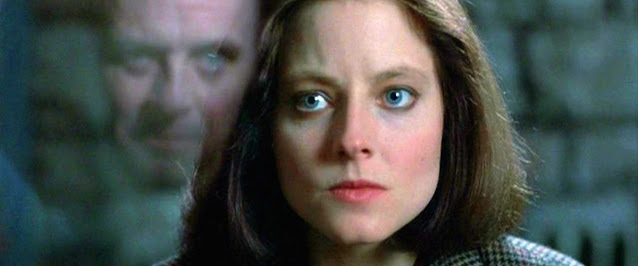There are many genres of films that historically get looked over whenever it comes time for the Academy to decide which films to single out for the highest honor. Horror, action, comedy, thriller, sci-fi and fantasy rarely if ever get serious consideration amongst the heavy hitters like historical dramas and biographies. Put a great science fiction film up against a period piece biographical drama and we all know which one will get the nomination. In 1991 that all changed, at least temporarily. In that year two types of films that generally get no love from the Academy competed alongside the likes of JFK and Bugsy, both period dramas biopics, for Best Picture of the year, the psychological horror sequel/reboot, The Silence of the Lambs and a Disney animated feature: Beauty and the Beast. When the dust settled had won the coveted Best Picture Oscar and Anthony Hopkins had burned that Hannibal Lecter stare into our brains, the one that suggested he would happily eat our liver with a bowl of fava beans and a nice chianti.
Clarice Starling (Jodi Foster) is an FBI trainee and has been excelling in all of her courses. This has caught the attention of her boss, Jack Crawford (Scott Glenn) who calls her into his office to offer her an assignment: interview the serial killer Dr. Hannibal Lecter (Anthony Hopkins) with the intent on profiling the man. Crawford doesn’t believe Lecter will talk to her but believes even some casual observations on Clarice’s part may provide valuable insights into the man. Secretly, Crawford hopes to draw out some information into the mind of a second serial killer who has been kidnapping overweight women, holding on to them for several days, then partially skinning them and dumping their bodies. This killer, nicknamed Buffalo Bill (Ted Levine), has killed several women already. Crawford believes Lecter can help the FBI track him down. Hannibal refuses to play along at first, correctly ascertaining the real reason Clarice is there. But, after a neighboring inmate assaults Clarice, the outraged doctor changes his mind and provides her with a clue into the identity and mind of the man doing the killings. Thus begins a psychological game of quid pro quo with Hannibal dangling just enough information to ensure Clarice will keep coming back until she can piece together what Buffalo Bill is up to and why.
The Silence of the Lambs was based on the novel by Thomas Harris who also penned the thematically similar Red Dragon, a book that was adapted into the 1986 film Manhunter. This book would receive a second adaptation in 2002 that, while boasting a return of Hopkins, failed to deliver on nearly every count. The same can be said for Hannibal, the sequel to The Silence of the Lambs. None of these films with the possible exception of Manhunter, capitalize on what made The Silence of the Lambs so good. It wasn’t Hopkins, although he is brilliant in all three of the films he’s in. It was the back and forth repartee between Clarice Starling and Hannibal. All one has to do is compare the introductory scene between Jodie Foster’s Clarice and Hopkin’s Hannibal with that of the same scene in Red Dragon with Edward Norton doing the same thing. There is an emotional buildup to the scene with Foster as she walks past the various cells leading up to Hannibal’s. Anticipation of seeing the man himself ascends until he’s finally in frame. The interaction as she tries clumsily to get information out of him and he plays with her shows a lot about her character and when one of the other inmates throws bodily fluids at her we learn a little something about Lecter himself, too. The scene in Red Dragon has no e of that build up and no chemistry between Norton and Hopkins. It tells us nothing about either character.
When first given the assignment to speak to Hannibal, Clarice is briefed on what not to do: do not give him personal information; do not let him get into your head. Throughout the course of her conversations with him she will do the very things she is warned not to do. “Quid Pro Quo” the doctor insists. He gives her insight into the mind of Buffalo Bill and she gives him info about herself starting with her worst day and delving ever deeper into a painful past. Clarice is a complex character striving to excel in a field dominated by men, raised by a law enforcement officer who was killed in the line of duty. All of this paints a picture of who she is. Her resessitation of being raised for a short while by a relative on a farm in Montana particularly resonates with Lecter as she describes the bleating of the lambs being led to the slaughter, a sound of helplessness she still hears sometimes. It’s speculated that perhaps she pushes herself so hard in her FBI training because, by saving people’s lives, she just might be able to blot out that sound, at least for a while.
The late Jonathan Demme has crafted in The Silence of the Lambs, a truly original look at mental illness and murderers. His sense of tone and pacing, combined with Thomas Harris’s prose, mesh together in such a way that it is easy to forget that this is not only a sequel of sorts but also a very similar story to the first book and movie. In the Red Dragon/Manhunter story a retired agent is tasked with interviewing Lecter in his cell to try and ferret out a killer targeting seemingly unconnected families. The Silence of the Lambs murderer has a very different modus operandi but it’s the same basic plot right up until Lecter escapes. Even the finale of both films involves blindness on the part of a key female character. Thomas Harris took the best elements of Red Dragon and improved upon them when writing The Silence of the Lambs and that translates over to the big screen adaptation, too.
There is plenty of tension building up to the finale but nothing compares to that final moment when Clarice knocks on a door looking for someone that may shed some light on the case and instead is brought face to face with Buffalo Bill himself. We know it’s him but at first she is blissfully unaware. As things begin to click into place the very real danger she is in dawns on her and her training kicks in. Buffalo Bill may be bigger and stronger than her but she has combat training and could probably hold her own in a fair fight. What follows terrified audiences in dark theaters back in 1991 and is some of the best use of darkness on screen since a blind Audrey Hepburn fought off Alan Arkin in a pitch black room in Wait Until Dark. The use of night vision so we can see the panic in Clarice’s eyes while she desperately tries to find her attacker by sound alone is so well done that first time viewers may pass out just from holding their breath.
On the strength of this film a sequel and two prequels were made of varying quality. The best of these, the Red Dragon remake succeeds mainly from the performance by Anthony Hopkins. Overall it is not a better film than Manhunter but the original film lacks a truly charismatic Hannibal Lecter. It wouldn’t be until recently with the release of the Hannibal television series that we would get another worthy actor in the role of Hannibal the Cannibal with Danish actor Mads Mikkelsen. As good as
Mads is, though, he’s no Anthony Hopkins who imbues in Hannibal a level of believability that makes him far more menacing than the man he’s being consulted about. Hannibal spends much of the movie behind bars but, even restrained like that, he oozes danger. He’s charismatic and charming but you can sense the danger lingering just behind that façade. He talks a fellow prisoner into swallowing his tongue, killing him with just the power of his voice. For every quid pro quo he enacts from Clarice we fear he may get too far into her head. That doesn’t happen in this movie, nor in the sequel. But if you read the book that sequel was based on you would know that it had a much different ending, much more aligned with what this film sets up. Some people hated that but it was at least true to where this film, and the book before it, hinted at.
Academy Award Nominations:
Best Picture: Edward Saxon, Kenneth Utt and Ron Bozman (won)
Best Director: Jonathan Demme (won)
Best Actor: Anthony Hopkins (won)
Best Actress: Jodie Foster (won)
Best Adapted Screenplay: Ted Tally (won)
Best Film Editing: Craig McKay
Best Sound: Tom Fleischman and Christopher Newman
____________________________________________________
Release Date: February 14, 1991
Running Time: 118 Minutes
Rated R
Starring: Jodie Foster, Anthony Hopkins, Scott Glenn and Ted Levine
Directed By: Jonathan Demme








Comments
Post a Comment